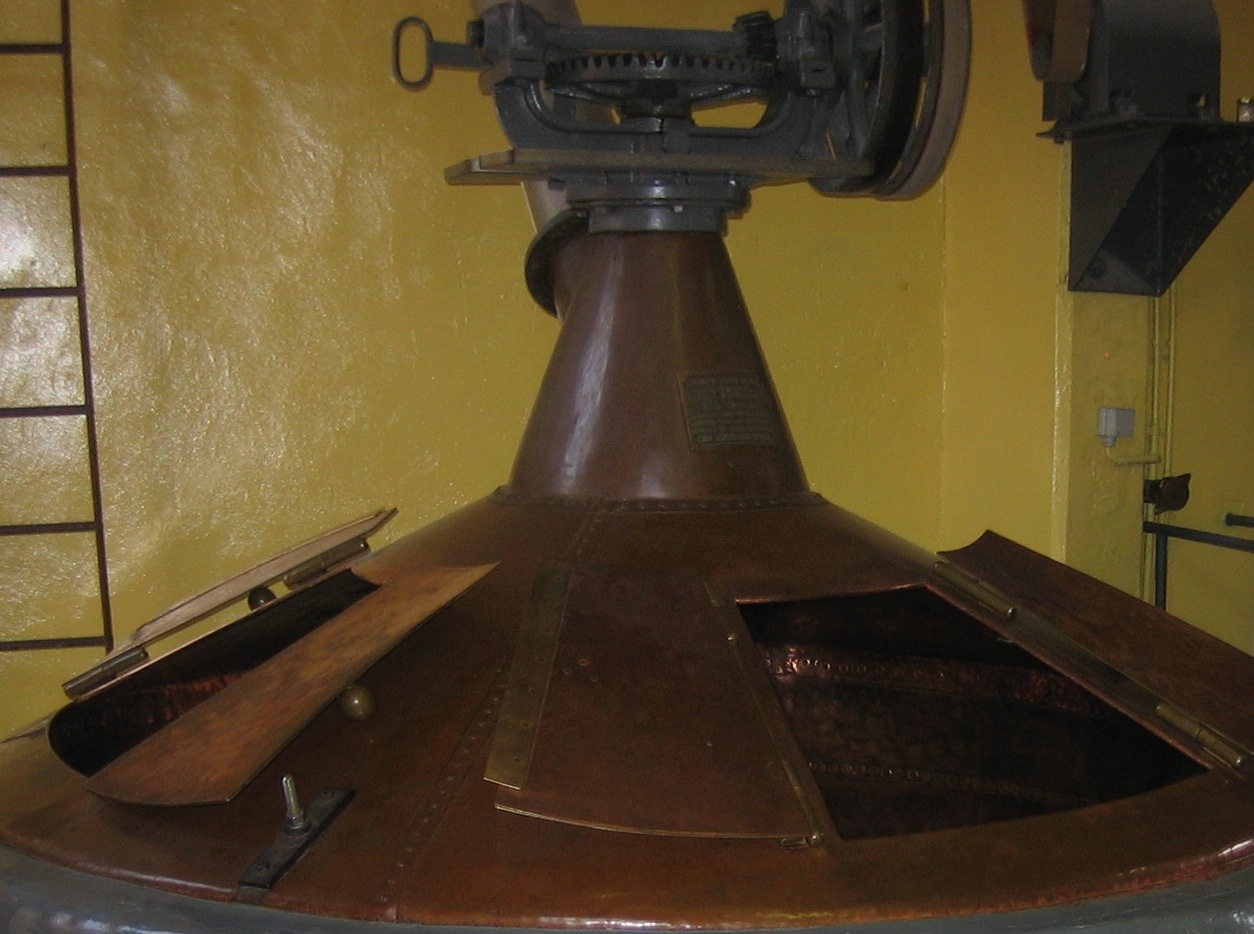 Not as prevalent in England as the nonic, the tulip is nevertheless a common shape in the imperial pint glass family. It's also, as you can see, popular among brewers looking to create special logo glassware.
Not as prevalent in England as the nonic, the tulip is nevertheless a common shape in the imperial pint glass family. It's also, as you can see, popular among brewers looking to create special logo glassware.The tulip glass -- so named because of its resemblance to the flower, as you might have guessed -- is easily identifiable by the way it flares above the center before gently tapering near the mouth. As such, it does a better job of capturing a beer's aromas than does a straight-sided glass or one that flares outward at the top. Plus, the tulip's graceful curves enhance the overall aesthetics of the well-poured pint resting inside.
In the U.K., a pint measures 568 mL or 19.2 ounces. This is known as the imperial pint, and imperial pint glasses, such as this Murphy's glass (right), are typically large enough to accommodate the prescribed volume of liquid plus sufficient head. In Britain, particularly, beer lovers take their drinking so seriously it is expressly illegal to short a bar patron on his pint of beer. Officially calibrated glassware and even calibrated pumps for draught beer are employed to keep unscrupulous tavern owners from ripping off thirsty Britons.
 Certainly, not all tulip glasses need measure an imperial pint, and nor do they. Versions such as this Bass tulip (right) measure one standard U.S. pint (16 ounces). Such promotional glassware is doubtless produced with American bar owners, who don't want to introduce an extra pricing scheme, in mind.
Certainly, not all tulip glasses need measure an imperial pint, and nor do they. Versions such as this Bass tulip (right) measure one standard U.S. pint (16 ounces). Such promotional glassware is doubtless produced with American bar owners, who don't want to introduce an extra pricing scheme, in mind.In addition, it should be noted that in the case of this 16-ounce tulip, that measurement -- unlike in U.K. versions -- will go right up to the lip of the glass, meaning a pour with the proper head will in fact be less than one pint. Lest this shock you, consider that the standard tumbler pint glass is actually designed the same way. Ever wonder why a 12-ounce bottle of beer appears to nearly fill up a pint glass when poured with a couple fingers' head? Keep that in mind next time you think you've bought 16 ounces of beer down at the local taproom.
The tulip, by virtue of its heritage, is a natural choice for just about any English ale. American ales do well in the tulip also, and thanks to its slightly tapered mouth, it's not a terrible idea to use the tulip for some of your more aromatic beers, such as Pale Ale and IPA. Really, the tulip is versatile enough to accommodate a wide range of styles, including many lagers. Generally speaking, Barleywine, Eisbock and other high-octane beers should find their way into a more globular vessel, such as a snifter.




